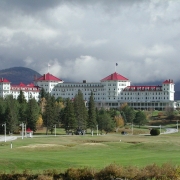What is the difference between the World Bank and the IMF?
Topic of Study [For H2 History Students]:
Paper 1: Understanding the Global Economy (1945-2000)
Section B: Essay Writing
Theme II Chapters 1: Reasons for growth of the global economy & Problems of economic liberalisation
A confusing perspective: The World Bank and IMF
It has become a common issue for people to ask what are the defining roles of the World Bank and the International Monetary Fund (IMF). In fact, during the inaugural meeting of the IMF, the British economist John Maynard Keynes was confused by the names. He added the the IMF should have been described as a ‘bank’, whereas the World Bank should be recognised as a ‘fund’.
Let’s recap on the roles of the IMF and the World Bank separately.
#1. The IMF
From 1945 to 1971, the IMF was established for two key purposes:
- Currency stabilisation through a fixed exchange rate system
- Provision of short-term loans to finance balance of payment deficits
Currency stabilisation was achieved through the US Dollar (USD) that was pegged to the gold. From 1958 to 1971, the USD was fixed in value to gold at $35 per ounce. Then, all other foreign currencies were pegged to the USD. In other words, USD became the international reserve currency. As such, stable currency values ascertain prices, thus encouraging greater trading and investment activities.
As for the second purpose, the IMF held a pool of funds that nations could borrow from to finance their debts. This pool of funds was to be contributed by member states, including the USA. The correction of balance of payment deficits is critical in maintaining exchange rate stability as well. These conditional loans were given to countries that agreed to correct their trade deficits through policy adjustments like austerity measures.
#2. The World Bank
As for the World Bank, its immediate role after World War Two was to provide long-term financing for devastated nations to rebuild their economies. Formerly known as the International Bank for Reconstruction and Development (IBRD), the institution was initially backed by the USA. For instance, the Marshall Aid was given to Europe for post-war reconstruction.
By the 1960s, the World Bank was more involved in financing the infrastructure projects in developing countries to realise their economic potential. Following the decolonisation of the Third World nations in Asia and Africa, many developing countries were in dire need of these loans.
Changes in the functions of the IMF and the World Bank: 1970s
After the US experienced the twin deficits in the 1960s and realised that a fixed exchange rate system was unsustainable, US President Nixon announced the abandonment of the fixed exchange rates regime on 15 August 1971. From 1973 onward, the IMF focused its efforts in providing short-terms to correct the balance of payment deficits of member nations.
Also, it was involved in managing the Third World Debt Crisis of the 1980s. In 1982, the Latin American nations negotiated with both banks and the IMF for debt repayments. As a result, the ‘bail-out loans’ were introduced. Should the debtor nation agree to accept the IMF loan, the government must agree to conduct policies to achieve macroeconomic stabilisation, such as reduction in government subsidies (part of the austerity measures).
However, the IMF bail-outs had disastrous impacts on the debtor nations. Without government subsidies, many households were unable to cope with the high cost of living. In Bolivia, the price of bread rose four times. Living standards deteriorated significantly. On separate but related note, the ‘IMF bail-out loans’ were introduced to Thailand and Indonesia during the Asian Financial Crisis.
As for the World Bank, it expanded its lending role to include “structural- and sector-adjustment loans” in the 1980s. These loans were meant to facilitate economic reforms to support the heavily indebted nations in Latin America and sub-Saharan Africa.
What can we learn from this article?
Consider the following question:
– Assess the significance of the IMF and World Bank in contributing to the growth of the global economy [to be discussed in class].
Sign up for our JC History Tuition and review your comprehension of the Global Economy as well as other topics like the United Nations to be ready for the GCE A Level History examinations. We also conduct classes for students taking H1 History, which covers contrasting topics such as Superpower Relations with China and the Cold War in Southeast Asia.
The H2 and H1 History Tuition feature online discussion and writing practices to enhance your knowledge application skills. Get useful study notes and clarify your doubts on the subject with the tutor. You can also follow our Telegram Channel to get useful updates.
We have other JC tuition classes, such as JC Math Tuition and JC Chemistry Tuition. For Secondary Tuition, we provide Secondary English Tuition, Secondary Math tuition, Secondary Chemistry Tuition, Social Studies Tuition, Geography, History Tuition and Secondary Economics Tuition. For Primary Tuition, we have Primary English, Math and Science Tuition. Call 9658 5789 to find out more.


